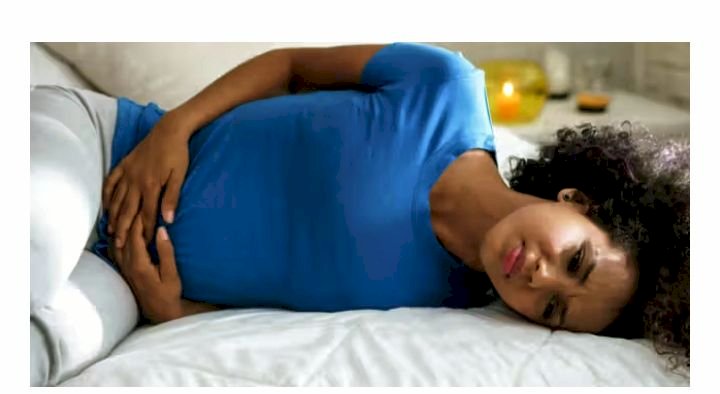See reasons most women get cramps after their period

Most women are used to experiencing cramps when they have their period. There are however times where these cramps still occur even after their period is over, which can be quite concerning.
While having cramps after your period can be unsettling, they are usually not a cause for alarm as there are several reasons why women may experience this discomfort, ranging from hormonal fluctuations to underlying health conditions.
Here are seven reasons women get cramps after their period.
1. Ovulation
One of the most common reasons for cramps after a period is ovulation. Ovulation typically occurs about two weeks after the start of your period, but for some women, it can occur earlier. During ovulation, an egg is released from the ovary, and this process can cause mild cramping or pain on one side of the abdomen, known as “mittelschmerz.” While this pain is usually brief, lasting a few hours to a couple of days, it can sometimes be mistaken for menstrual cramps.
2. Hormonal Fluctuations
Being a woman means there are times where your hormones start fluctuating especially after your menstruation. This can sometimes lead to muscle contractions in the uterus, causing cramping sensations even after the period has ended.
3. Fibroids
Another reason for cramps after periods are uterine fibroids. These are noncancerous growths that develop in or on the uterus and can cause a range of symptoms, including heavy periods, pain during sex, and cramping that can extend beyond your period. While fibroids are generally harmless, they can cause significant discomfort and may require treatment if they grow large or cause persistent pain. In some cases, fibroids can lead to cramping after menstruation due to their pressure on the surrounding tissues.
4. Endometriosis
Endometriosis is a condition where tissue similar to the lining of the uterus grows outside the uterus, such as on the ovaries, fallopian tubes, or other pelvic organs. This tissue responds to hormonal changes just like the uterine lining, which means it can cause pain and cramping throughout the menstrual cycle, even after your period ends. Endometriosis can lead to severe cramps and may also cause other symptoms such as heavy bleeding, pain during intercourse, and infertility.
5. Adenomyosis
Adenomyosis is a condition similar to endometriosis, but in this case, the endometrial tissue grows into the muscular wall of the uterus. This can cause the uterus to enlarge and lead to prolonged periods, heavy bleeding, and cramping even after menstruation. Adenomyosis can be painful and often requires medical intervention to manage the symptoms. Women with this condition may notice that their cramps extend beyond their normal menstrual cycle.
6. Pelvic Inflammatory Disease (PID)
Pelvic inflammatory disease (PID) is an infection of the female reproductive organs, often caused by sexually transmitted infections (STIs) like chlamydia or gonorrhea. PID can cause chronic pelvic pain, irregular periods, and cramps that may occur before, during, or after menstruation. Other symptoms of PID may include abnormal vaginal discharge, fever, and pain during intercourse. If left untreated, PID can lead to serious complications, including infertility, so it’s important to seek medical attention if you suspect you may have it.
7. Ovarian Cysts
Ovarian cysts are fluid-filled sacs that form on the ovaries. While many ovarian cysts are harmless and go away on their own, larger cysts or those that rupture can cause cramping and pelvic pain at any time during the menstrual cycle. Post-period cramps may be a sign of an ovarian cyst, especially if the pain is sudden, severe, or localized to one side of the abdomen. If you experience sharp or worsening pain, it’s important to seek medical attention to rule out complications like ovarian torsion.






















